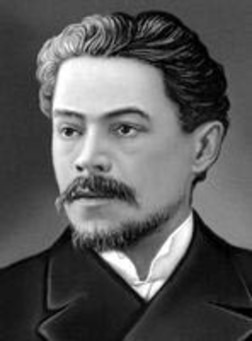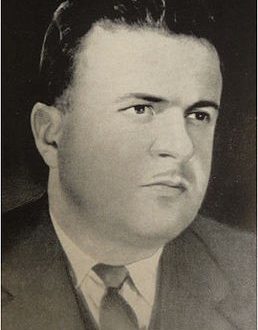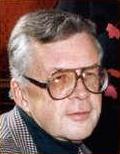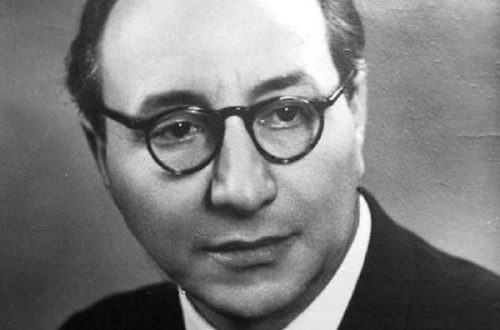
Anton Stepanovich Arensky |
Anton Arensky
Arensky. Violin Concerto (Jascha Heifetz)
Arensky is surprisingly smart in music… He is a very interesting person! P. Tchaikovsky
Of the newest, Arensky is the best, it is simple, melodic… L. Tolstoy
Musicians and music lovers of the end of the last and the beginning of this century would not have believed that Arensky’s work and even the very name of Arensky after only three quarters of a century would be little known. After all, his operas, symphonic and chamber compositions, especially piano works and romances, sounded constantly, staged in the best theaters, performed by famous artists, warmly received by critics and the public … The future composer received his initial musical education in the family. His father, a Nizhny Novgorod doctor, was an amateur musician, and his mother was a good pianist. The next stage of Arensky’s life is connected with St. Petersburg. Here he continued his music studies and in 1882 he graduated from the conservatory in the composition class of N. Rimsky-Korsakov. He was engaged unevenly, but showed a bright talent and was awarded a gold medal. The young musician was immediately invited to the Moscow Conservatory as a teacher of theoretical subjects, later composition. In Moscow, Arensky became close friends with Tchaikovsky and Taneyev. The influence of the first became decisive for Arensky’s musical creativity, the second became a close friend. At the request of Taneyev, Tchaikovsky gave Arensky the libretto of his early destroyed opera The Voyevoda, and the opera Dream on the Volga appeared, successfully staged by the Moscow Bolshoi Theater in 1890. Tchaikovsky called it one of the best, “and in some places even excellent Russian opera” and added: “The scene of the Voyevoda’s dream made me shed many sweet tears.” Another opera by Arensky, Raphael, seemed to the strict Taneyev capable of equally delighting both professional musicians and the public; in the diary of this unsentimental person we find in connection with Raphael the same word as in Tchaikovsky’s confession: “I was moved to tears …” Maybe this also applied to the still popular Song of the singer behind the stage – “The heart trembles with passion and bliss”?
Arensky’s activities in Moscow were varied. While working at the conservatory, he created textbooks that were used by many generations of musicians. Rachmaninov and Scriabin, A. Koreshchenko, G. Konyus, R. Glier studied in his class. The latter recalled: “… Arensky’s remarks and advice were more artistic than technical in nature.” However, the uneven nature of Arensky – he was a person who was carried away and quick-tempered – sometimes led to conflicts with his students. Arensky performed as a conductor, both with a symphony orchestra and in concerts of the young Russian Choral Society. Soon, on the recommendation of M. Balakirev, Arensky was invited to St. Petersburg to the post of manager of the Court Choir. The position was very honorable, but also very burdensome and did not correspond to the musician’s inclinations. For 6 years he created few works and, only, having been released from service in 1901, he again began to perform in concerts and compose intensively. But a disease lay in wait for him – pulmonary tuberculosis, which a few years later brought him to the grave …
Among the famous performers of Arensky’s works was F. Chaliapin: he sang the romantic ballad “Wolves”, dedicated to him, and “Children’s Songs”, and – with the greatest success – “Minstrel”. V. Komissarzhevskaya performed in a special genre of melodeclamation widespread at the beginning of the century, with the performance of Arensky’s works; the listeners remembered her reading on the music “How good, how fresh were the roses…” An assessment of one of the best works – Trio in D minor can be found in Stravinsky’s “Dialogues”: “Arensky… treated me friendly, with interest and helped me; I have always liked him and at least one of his works, the famous piano trio. (The names of both composers will meet later – on the Paris poster of S. Diaghilev, which will include the music of Arensky’s ballet “Egyptian Nights”.)
Leo Tolstoy valued Arensky above other contemporary Russian composers, and in particular, suites for two pianos, which really belong to the best of Arensky’s writings. (Not without their influence, he later wrote suites for the same composition of Rachmaninov). In one of the letters of Taneyev, who lived with the Tolstoys in Yasnaya Polyana in the summer of 1896 and, together with A. Goldenweiser, played in the evenings for the writer, it is reported: “Two days ago, in the presence of a large society, we played … on two pianos “Silhouettes” (Suite E 2. – L. K.) by Anton Stepanovich, who were very successful and reconciled Lev Nikolaevich with new music. He especially liked The Spanish Dancer (the last number), and he thought about her for a long time. Suites and other piano pieces until the end of his performing activity – until the 1940s – 50s. – kept in the repertoire of Soviet pianists of the older generation, students of Arensky – Goldenweiser and K. Igumnov. And still sounds in concerts and on the radio Fantasia on themes by Ryabinin for piano and orchestra, created in 1899. Back in the early 90s. Arensky wrote down in Moscow from a remarkable storyteller, the Olonets peasant Ivan Trofimovich Ryabinin, several epics; and two of them – about the boyar Skopin-Shuisky and “Volga and Mikula” – he took as the basis of his Fantasy. Fantasia, Trio, and many other instrumental and vocal pieces by Arensky, not being very deep in their emotional and intellectual content, not distinguished by innovation, at the same time attract with sincerity of lyrical – often elegiac – statements, generous melody. They are temperamental, graceful, artistic. These properties inclined the listeners’ hearts to Arensky’s music. previous years. They can bring joy even today, for they are marked by both talent and skill.
L. Korabelnikova





